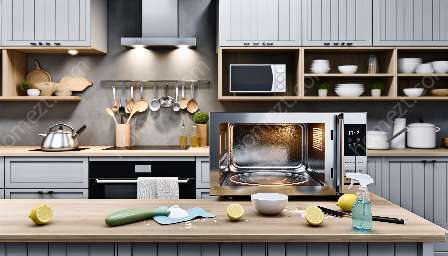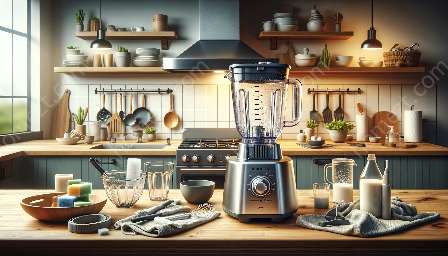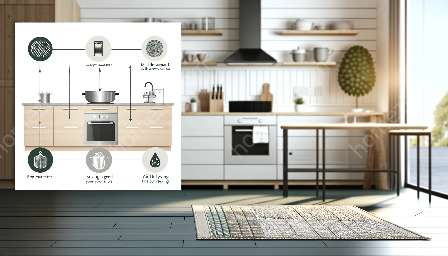Keeping your kitchen kettle clean is essential for maintaining a hygienic kitchen environment. Not only does a clean kettle ensure that your brewed beverages taste fresh, but it also helps to prevent the buildup of limescale and deposits that can affect the performance and lifespan of your kettle. In this comprehensive guide, we will walk you through the step-by-step process of cleaning your kitchen kettle and provide tips for effective kitchen cleaning and maintenance.
Tips for Effective Kitchen Cleaning
Your kitchen is the heart of your home, and keeping it clean is crucial for the health and well-being of your family. Here are some essential tips for maintaining a clean and hygienic kitchen:
- Wipe Down Surfaces Regularly: Use a mild detergent and warm water to wipe down kitchen countertops, stovetops, and other surfaces regularly to remove grease, grime, and food residue.
- Use the Right Cleaning Products: Select cleaning products that are suitable for the specific surfaces and materials in your kitchen. Avoid using abrasive cleaners on delicate surfaces.
- Clean Appliances and Utensils: Regularly clean your kitchen appliances, such as the oven, microwave, and refrigerator, to prevent the buildup of dirt, grease, and bacteria. Clean utensils, pots, and pans thoroughly after each use.
- Empty and Clean the Trash Can: Empty the trash can frequently and clean it with a disinfectant to eliminate odors and prevent the spread of bacteria.
- Maintain Food Storage Hygiene: Store food items properly to prevent contamination and spoilage. Regularly clean and organize your pantry and refrigerator.
- Deep Clean Periodically: Schedule deep cleaning sessions to tackle areas that may be overlooked during regular cleaning, such as the insides of cabinets, behind appliances, and under the sink.
The Importance of Cleaning Your Kitchen Kettle
A kitchen kettle is a commonly used appliance that requires regular cleaning to ensure that it continues to function efficiently and safely. Over time, mineral deposits, limescale, and impurities from water can build up inside the kettle, affecting the taste of hot beverages and potentially compromising the kettle's performance. Additionally, neglecting to clean the kettle can lead to the growth of bacteria and mold, posing health risks.
Step-by-Step Guide to Cleaning Your Kitchen Kettle
Step 1: Prepare the Cleaning Solution
Start by unplugging the kettle and allowing it to cool down. Prepare a solution of equal parts water and distilled white vinegar. The vinegar's acidic properties help to break down limescale and mineral deposits effectively.
Step 2: Descaling the Kettle
Pour the vinegar solution into the kettle, ensuring that the heating element or any electrical components are not submerged. Leave the solution to sit for at least 30 minutes to dissolve the limescale and mineral buildup.
Step 3: Scrubbing and Rinsing
Use a soft-bristled brush or sponge to scrub the interior of the kettle, focusing on areas with stubborn deposits. Rinse the kettle thoroughly with clean water to remove any vinegar residue.
Step 4: Disinfecting the Exterior
Wipe the exterior of the kettle with a damp cloth and a mild detergent. Pay attention to the spout and handle, where dirt and grease can accumulate.
Step 5: Final Rinse and Drying
Fill the kettle with clean water and boil it once to remove any remaining traces of vinegar. Discard the boiled water and allow the kettle to air dry before using it again.
Tips for Maintaining a Clean Kitchen Kettle
- Regular Descaling: Depending on the hardness of your water, descale your kettle every 2-4 weeks to prevent limescale buildup.
- Use Filtered Water: Consider using filtered water in your kettle to reduce the buildup of impurities and minerals.
- Empty the Kettle After Use: Don't leave water sitting in the kettle for extended periods, as this can lead to the accumulation of deposits and odors.
- Keep the Lid Open: Allow the interior of the kettle to dry thoroughly by leaving the lid open when it's not in use.
By following these steps and tips, you can ensure that your kitchen kettle remains clean, safe, and free from limescale and impurities. A well-maintained kettle not only contributes to the overall cleanliness of your kitchen but also ensures that your hot beverages taste as good as they should.


















































